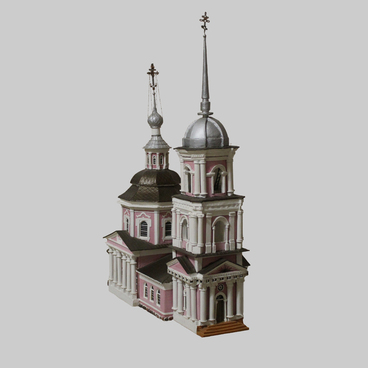Medal ‘In the memory of the Russo-Turkish war 1877—1878’ is the State award of the Russian Empire to award those involved in this armed conflict.
The medal was established by the decree of Emperor Alexander II on April 17 (29), 1878 and had three different variants - silver, light and dark bronze. The design of the medals was approved by Emperor Alexander II himself.
The Silver Medal was awarded to all persons who took part in the defence of the Shipkin Passasge or who were temporarily on duty there; all persons who defended Bayezet during the blockade. Since 1881, silver medals have also been awarded to the participants of the Siege of Kars, with earlier light bronze medals to be replaced.
The Light Bronze Medal was awarded to all ranks who fought at least one of the battles against the enemy during the war from 1877 to 1878, including during the suppression of the uprisings in the North Caucasus and during the fighting against the Circassian troops in Abkhazia. The award was also given to Bulgarian militiamen, priests, doctors, paramedics, sisters of mercy who were in the army and put their lives in danger.
The Dark Bronze Medal was awarded to all military ranks, Bulgarian militiamen, volunteers, sailors, and medical personnel who did not participate in the battle, but were present in the Ottoman Empire and Russia, where martial law was in effect.
The medals were cast in the form of the correct circle with a diameter of 27 millimetres. The design of the face side is close to that of the medal ‘For the Turkish War’ of 1830. On the front side of the medal in the center were depictions of an Orthodox cross surrounded by light. It lies above the defeated crescent moon, with which the cross formed a single composition. Along the side, the dates can be distinguished: ‘1877.’ and ‘1878.’ On the back of the medal there is an inscription in four lines: ‘Not unto us, O Lord, not unto us, but unto thy Name give glory’. The inscription on the bottom and on the sides is framed by two laurel branches bound by a ribbon.
From 1878 to 1883, 83,374 silver, 635,921 light bronze, 335,424 dark bronze medals were minted at the Saint Petersburg Mint. The medals could also be produced by private workshops. Because of this the medals from different masters differed from the state ones not only by the image, but also by the construction. It was allowed to issue tail-coat versions of the medals, which could be worn not only on a military uniform but also on a coat-tail. Since 1911, by the decree of Nicholas II, the wounded and shell-shocked in combat could wear these medals on a ribbon with a bow.
The medal was established by the decree of Emperor Alexander II on April 17 (29), 1878 and had three different variants - silver, light and dark bronze. The design of the medals was approved by Emperor Alexander II himself.
The Silver Medal was awarded to all persons who took part in the defence of the Shipkin Passasge or who were temporarily on duty there; all persons who defended Bayezet during the blockade. Since 1881, silver medals have also been awarded to the participants of the Siege of Kars, with earlier light bronze medals to be replaced.
The Light Bronze Medal was awarded to all ranks who fought at least one of the battles against the enemy during the war from 1877 to 1878, including during the suppression of the uprisings in the North Caucasus and during the fighting against the Circassian troops in Abkhazia. The award was also given to Bulgarian militiamen, priests, doctors, paramedics, sisters of mercy who were in the army and put their lives in danger.
The Dark Bronze Medal was awarded to all military ranks, Bulgarian militiamen, volunteers, sailors, and medical personnel who did not participate in the battle, but were present in the Ottoman Empire and Russia, where martial law was in effect.
The medals were cast in the form of the correct circle with a diameter of 27 millimetres. The design of the face side is close to that of the medal ‘For the Turkish War’ of 1830. On the front side of the medal in the center were depictions of an Orthodox cross surrounded by light. It lies above the defeated crescent moon, with which the cross formed a single composition. Along the side, the dates can be distinguished: ‘1877.’ and ‘1878.’ On the back of the medal there is an inscription in four lines: ‘Not unto us, O Lord, not unto us, but unto thy Name give glory’. The inscription on the bottom and on the sides is framed by two laurel branches bound by a ribbon.
From 1878 to 1883, 83,374 silver, 635,921 light bronze, 335,424 dark bronze medals were minted at the Saint Petersburg Mint. The medals could also be produced by private workshops. Because of this the medals from different masters differed from the state ones not only by the image, but also by the construction. It was allowed to issue tail-coat versions of the medals, which could be worn not only on a military uniform but also on a coat-tail. Since 1911, by the decree of Nicholas II, the wounded and shell-shocked in combat could wear these medals on a ribbon with a bow.



